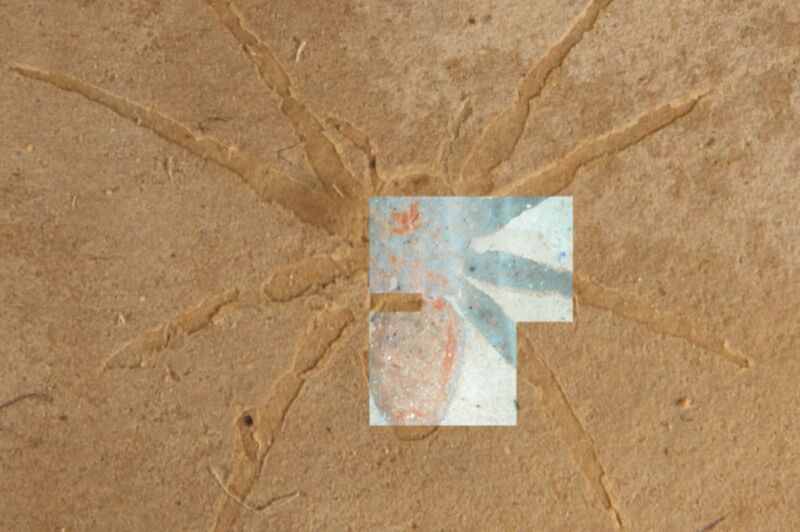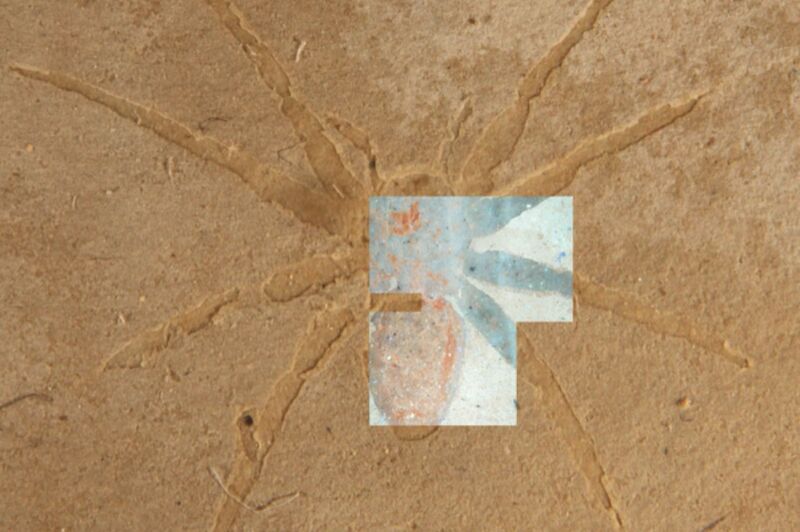
Enlarge / Fossilized spider from the Aix-en-Provence formation in France seen in hand sample overlain with fluorescent microscopy image of the same fossil. UV illumination causes the fossil to glow brightly, revealing more details about its preservation. (credit: Olcott et al., 2022)
Scientists have long puzzled over the exceptional preservation of certain fossils of Cenozoic-era biota, including plants, fish, amphibians, spiders, and other insects. The secret: The presence of mats comprised of single-celled microalgae (diatoms) created an anaerobic environment for fossilization and chemically reacted with the spiders’ organic polymers to turn them into thin carbon-rich films. The process is similar to a common industrial treatment to preserve rubber, according to a recent paper published in the journal Communications Earth & Environment.
Most fossils are basically mineralized body parts: shells, bones, and teeth. But softer tissues are far more likely to decay than fossilize, including chitinous exoskeletons, skin, and feathers. Soft-tissue organisms tend to be under-represented among fossils, except for unusual deposits (called Fossil-Lagerstätten) that boast rich arrays of such fossils in remarkable preservation.
“Most life doesn’t become a fossil,” said Alison Olcott, a geologist at the University of Kansas. “It’s hard to become a fossil. You have to die under very specific circumstances, and one of the easiest ways to become a fossil is to have hard parts like bones, horns, and teeth. So, our record of soft-body life and terrestrial life, like spiders, is spotty—but we have these periods of exceptional preservation when all circumstances were harmonious for preservation to happen.”





